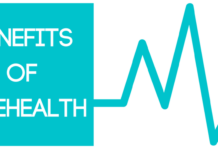Antimicrobial resistance (AMR) has emerged as one of the most pressing global health challenges of the 21st century (World Health Organization, 2020). Antimicrobial resistance (AMR) is when germs like bacteria, viruses, fungi, and parasites can survive medicines meant to kill them. This resistance makes infections harder to treat. It can cause longer illnesses. This may lead to more deaths. It also puts a heavier burden on healthcare systems. Centers for Disease Control and Prevention, 2022. Recognizing AMR as a global threat, WHO calls it a “silent pandemic,” as it obstructs public health systems gradually and systematically (World Health Organization, 2020).
Understanding Antimicrobial Resistance
Antimicrobial Resistance is defined in the view of the microorganisms as developing a mechanism for their own survival after challenge by an antimicrobial agent (World Health Organization, 2020). The mechanism of resistance can arise from genetic mutation, or by acquisition of resistance genes from another organism. This becomes an accelerated phenomenon in case of misuse and overuse of antibiotics in human medicine, agriculture and animal husbandry (World Bank, 2017). Major contributing factors to the development of resistant strains include the indiscriminate use of antibiotics and higher rates of prescription as a livestock feed (Centers for Disease Control and Prevention, 2022).
The Global Impact of AMR
Globally, antimicrobial resistance (AMR) threatens serious consequences for health, economies, and security (World Health Organization, 2020). According to the WHO, at least 700,000 deaths worldwide occur each year due to infections caused by resistant pathogens, and if prompt action is not taken, this number could increase to 10 million by 2050 (World Health Organization, 2020). AMR makes the treatment of common infections increasingly difficult and, in many cases, impossible: pneumonia, tuberculosis, gonorrhea, and blood infections (Centers for Disease Control and Prevention, 2022).
AMR also weighs heavily upon the world economy (World Bank, 2017). Extra costs due to longer patient stay, expensive antibiotics, and death put greater strain upon working healthcare systems, especially in low- and middle-income countries (World Bank, 2017). According to World Bank estimates, if AMR were to continue unopposed, it could, by the year 2050, create a global economic loss of almost $100 trillion (World Bank, 2017).
Key Drivers of AMR
- Overuse and Misuse of Antibiotics: According to the Centers for Disease Control and Prevention, the overuse and misuse of antibiotics has become a prime cause of aggravation of AMR in human and veterinary medicine. Such cases include prescription of antibiotics for viral infections, unnecessary prophylactic use, and self-medication without the intervention of a licensed health professional (World Health Organization 2020).
- Lack of New Antibiotics: The development of new antibiotics has declined tremendously over the past few decades (World Bank, 2017). Scientific, regulatory, and economic issues concerning antibiotic research are deeply affecting the pharmaceutical companies, which in turn are leading to a shrinking pipeline of new antimicrobial drugs (Centers for Disease Control and Prevention, 2022).
- Inadequate Infection Control Measures: Poor hygiene and sanitation conditions, as well as a lack of infection control measures in healthcare facilities, foster an environment for the rapid transmission of resistant microorganisms (WHO, 2020).
- Global Travel and Trade: It is said that the free movement of pathogens across borders renders the local containment of AMR virtually impossible (World Health Organization, 2020) because of international travel and trade.
Strategies to Combat AMR
AMR should be tackled with a multidisciplinary, transdisciplinary approach called “One Health,” encompassing the interdependence of human health, animal health, and environmental health (World Health Organization, 2020).
- Rational Use of Antibiotics: Antibiotic stewardship programs promote the adequate use of antibiotics (Centers for Disease Control and Prevention, 2022). It involves the restriction of prescriptions for antibiotics only when necessary, the selection of the appropriate drug, the appropriate dosage and duration of therapy, and educating healthcare professionals and the public about the consequences of AMR (World Health Organization, 2020).
- Strengthening Surveillance Systems: The monitoring of AMR would benefit from dependable global surveillance systems in tracing outbreaks and undertaking necessary public health interventions (World Health Organization, 2020). For instance, The Global Antimicrobial Resistance Surveillance System (GLASS) is one such system initiated by WHO (World Health Organization, 2020).
- Investment in Research and Development: Encouraging investment in the development and manufacturing of new antibiotics, vaccines, diagnostics, and alternatives is essential to outpace the ever-adapting resistance (World Bank, 2017).
- Improving Infection Prevention and Control: New treatments, including new antibiotics, vaccines, diagnostics, and alternative treatment methods-in general, crop protection-is needed to counter the diverging pathogens (Dhoro et al., 2014) .
- Public Awareness and Education: The aforementioned World Health Organization report describes how awareness of AMR and related educational campaigns seek to increase proper antibiotic use and compliance with prescribed treatments (World Health Organization, 2020).
The Role of Global Cooperation
Combating AMR in action requires cooperation on a global scale (World Health Organization, 2020). AMR, thus, sits high on WHO and UN agendas as well as that of the G20 in the context of coordinated international efforts (World Health Organization, 2020). Thus, the WHO Global Action Plan on AMR serves as a basis for the development of national action plans being undertaken around the globe to confront this crisis through policy, funding, and collaborative research (World Bank, 2017).
Conclusion
Antimicrobial resistance is a silent but serious threat to the world health system and may roll back decades of medical advancement (World Health Organization, 2020). Efforts are urgently needed from the government, health care providers, researchers, and the public in the fight against AMR (Centers for Disease Control and Prevention, 2022). There is a way forward in AMR mitigation through rational use of antibiotics, careful monitoring, development of new therapies, and global partnership; this way, there may be protection of the efficacy of these life-saving medicines for future generations (World Health Organization, 2020).
References
- World Health Organization. (2020). Antimicrobial resistance. Retrieved from https://www.who.int/news-room/fact-sheets/detail/antimicrobial-resistance
- World Bank. (2017). Drug-resistant infections: A threat to our economic future. Retrieved from https://www.worldbank.org/en/topic/health/publication/drug-resistant-infections-a-threat-to-our-economic-future
- Centers for Disease Control and Prevention. (2022). Antibiotic resistance threats in the United States. Retrieved from https://www.cdc.gov/drugresistance/biggest-threats.html










